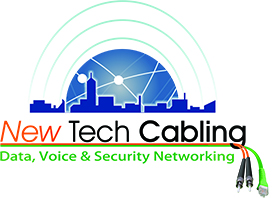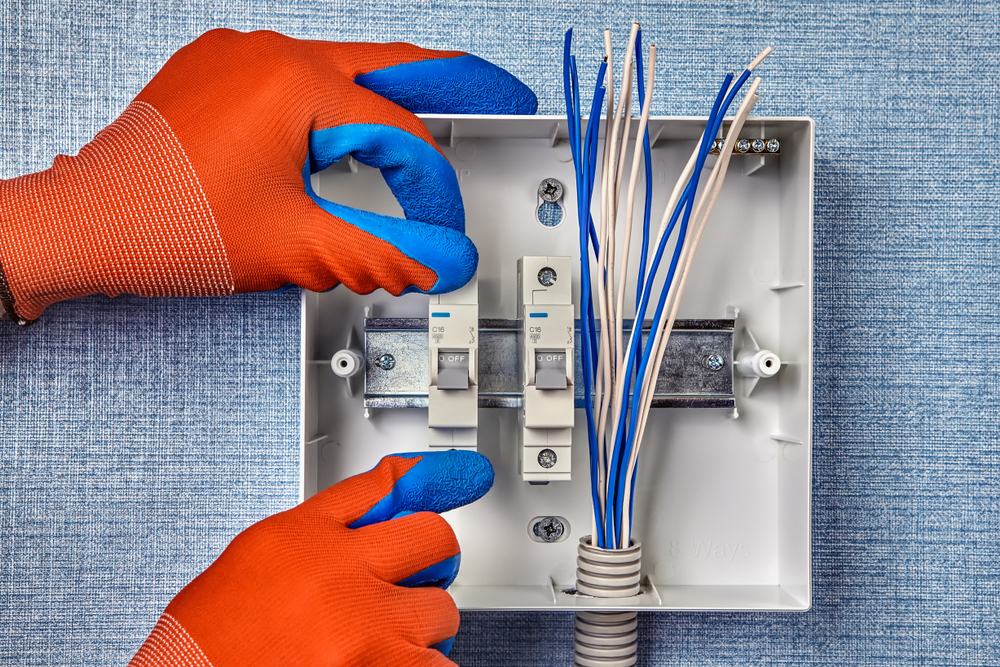Connectivity and communication play a critical role in ensuring seamless operations today. Whether setting up a new office or upgrading an existing infrastructure, low-voltage wiring is an essential component in establishing a reliable commercial network setup. Unlike standard electrical wiring, which carries high-voltage power, low-voltage wiring operates at 50 volts or less, making it ideal for applications such as telecommunications, security systems, and data networking.
A well-planned low-voltage wiring infrastructure can optimize efficiency, improve data transmission speeds, and support various devices simultaneously. Businesses rely on structured cabling to maintain a stable and scalable network that accommodates future growth. Implementing the right wiring solution ensures that all technological components, from VoIP phones to surveillance cameras, function seamlessly without disruptions. Understanding the significance of low-voltage wiring is the first step in making informed decisions that align with business needs and future expansion plans.
Assessing Your Business’s Wiring Needs
Before selecting a low-voltage wiring solution, it is crucial to assess the specific needs of your business. The type of industry, the number of employees, and the technology used all influence the decision-making process. A commercial network setup for a call center, for instance, will have different wiring requirements than a retail store or a healthcare facility. Identifying the primary applications—such as internet connectivity, security systems, intercoms, or smart automation—helps determine the most suitable cabling infrastructure.
Bandwidth requirements also play a significant role in selecting the right wiring solution. Businesses that rely heavily on cloud computing, video conferencing, and high-speed data transfers should invest in high-performance cabling to prevent lag and network congestion. Additionally, considering the physical layout of the workspace is essential, as open floor plans, multiple floors, and remote workstations require strategic cable management. Proper planning not only enhances efficiency but also minimizes potential maintenance costs in the long run.
Types of Low-Voltage Wiring Solutions
There are several types of low-voltage wiring options available, each designed to cater to specific business needs. The most commonly used options include Category 5e (Cat5e), Category 6 (Cat6), and fiber optic cables.
Cat5e cables are an affordable and reliable choice for businesses with moderate network demands. They support up to 1 Gbps speeds, making them suitable for small to medium-sized offices. However, as data consumption increases, many businesses opt for Cat6 cables, which provide faster speeds and reduced crosstalk interference. With speeds of up to 10 Gbps over short distances, Cat6 wiring is an excellent option for businesses that require higher bandwidth capacity.
Fiber optic cables are becoming increasingly popular due to their superior speed and reliability. Unlike copper cables, fiber optics use light to transmit data, resulting in significantly faster connections and longer transmission distances without signal degradation. This type of cabling is ideal for businesses that demand high-speed internet, secure data transfer, and extensive networking capabilities across multiple locations.
Each wiring solution has its advantages, and selecting the right one depends on factors such as budget, scalability, and the complexity of the commercial network setup. Consulting with an experienced wiring professional can help determine the most effective solution for specific business requirements.
Installation and Maintenance Best Practices
Once the appropriate low-voltage wiring solution has been selected, proper installation and maintenance are critical to ensuring long-term performance. Hiring a professional installation team ensures that all cables are properly routed, labeled, and tested to prevent connectivity issues. A structured cabling system should be neatly organized in a dedicated network room or closet to avoid tangled wires, which can lead to interference and troubleshooting difficulties.
Regular maintenance is equally important in sustaining an efficient network infrastructure. Businesses should implement periodic cable inspections to check for wear and tear, damaged connectors, or signal loss. Keeping detailed records of cable layouts and configurations simplifies troubleshooting and future upgrades. Additionally, investing in surge protectors and cable management solutions helps safeguard network equipment from power surges and physical damage.
Security is another crucial aspect of maintaining a low-voltage wiring system. Protecting network cables from unauthorized access and potential cyber threats ensures data integrity and confidentiality. Implementing firewalls, encryption, and access control measures further strengthens the security of the commercial network setup. Proper maintenance and security protocols enhance the longevity and reliability of the wiring infrastructure, ultimately contributing to business continuity and productivity.
Future-Proofing Your Business with the Right Wiring Solution
As technology continues to evolve, businesses must consider future scalability when choosing a low-voltage wiring solution. The rapid adoption of cloud-based applications, IoT devices, and smart automation requires a network infrastructure that can support emerging technologies. Investing in high-quality cabling that accommodates increased bandwidth demands ensures that businesses remain competitive and adaptable to future advancements.
One way to future-proof a commercial network setup is by implementing a hybrid cabling solution that combines copper and fiber optic cables. This approach allows businesses to balance cost-effectiveness with high-performance connectivity. Additionally, modular cabling systems provide flexibility, making it easier to expand or reconfigure network setups as needed.
The growing trend of remote work and mobile connectivity also highlights the importance of wireless networking. While wired connections remain the backbone of a reliable network, integrating wireless access points enhances mobility and convenience. Businesses should consider a combination of wired and wireless infrastructure to optimize performance and accommodate diverse work environments.
By planning ahead and selecting the right low-voltage wiring solution, businesses can create a robust and scalable network that supports current operations and future growth. Investing in a well-structured wiring system is a long-term strategy that enhances efficiency, connectivity, and overall business success.
Need Network Cabling Professionals Near You?
Here at New Tech Cabling, we are an industry leader with proven success in the design, installation and maintenance of the latest technology cabling the industry has to offer today. Our team takes the time to understand your needs, and then produces network cabling solutions that simply work better. If you’re looking for a group of intelligent professionals committed to innovation, contact us today to schedule a consultation. We look forward to making things happen for you!


Recent Comments